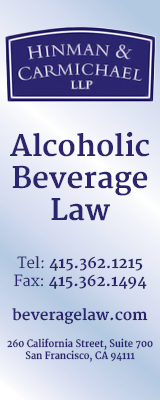FREE! Subscribe to News Fetch, THE daily wine industry briefing - Click Here
![Banner_Xpur_160x600---Wine-Industry-Insight[63]](/wp-content/uploads/Banner_Xpur_160x600-Wine-Industry-Insight63.jpg) |
 ALSO SPONSORED BY: 
Wine Industry Insight |
 |
3/4 Of Wine In The US Has NEVER Been Rated By Critics
This is part of a series on flaws in current wine recommendation systems originally published at Wine Industry Insights:
- The Problem: Welcome To The Vino Casino And Wine’s Shaky Core
- Genetics: Inherited Taste Chaos Sabotages How Wine Gets Recommended
- Scaling: 3/4 Of Wine In The US Has NEVER Been Rated By Critics
- Misinterpretation: Words: Big Trouble For Tasting Notes
- Inconsistency: Rating The Rating Systems
- Psychology: Vino-Anxiety, Stress and Social Pressure Sabotage Wine Choice
- Incompatibility: Taste Profiling – Organoleptic Breakdown
For much more on recommendation systems, please visit: Recommendation Insights
Consumers who try to rely upon wine ratings to make purchase decision are often thwarted by the widespread absence of reviews. For that reason, I’ve been trying to figure out about how many wines that are for sale in the United States have actually been rated by critics.
The numbers suggest that only about 25% ever get evaluated by the critics.
How did I come up with the number? With a few assumptions based on the best data I could locate.
RATED: 25,000
The Wine Spectator says it rates 15,000 wines a year. The Decanter wine competition has about 13,000.
- Assume a 50% overlap there. That would be 21,500.
- Assume great overlaps with other critics and publications, but some additional wines.
- Assume, perhaps the total of wines — available in the United States — and also rated rated by a critic is approximately 25,000
AVAILABLE: 95,000
Data below comes from TTB’s COLA database for 2011-2013.
Search results turned up slightly different totals from day to day even though this is historical data.
I also found that searching for a Range of types (80-81, for example) ![]() gave fewer results than separate searches for each type.
gave fewer results than separate searches for each type.
(80-80) + (80A-80A) + (81-81). Thus, the graph below comes after 12 separate searches.
What Jurassic data provider cobbled this dinosaur together?
ACTUAL NUMBERS HIGHER DUE TO COLA RULES
The actual number for 2012 and 2013 are likely a lot higher because in 2012, the TTB began allowing a wide range of label changes (vintages dates and more) withOUT needing a new COLA.(Complete List of Allowable Revisions To Approved Labels).
ASSUMPTIONS BECAUSE NO ONE REALLY KNOWS
No one really knows how many new wines are released every year without a COLA because the label changes were allows.
- Assume that 10% of new releases are sold without needing a new COAL. For 2013, that would be roughly 7,600 more wines.
In addition, not every bottle of every vintage is sold in one year. This is especially true for red wines which tend to have a longer shelf life.
- Assume: 5% of 2011 wines (3,800) and 10% of 2012 wines (8,000) would have been for sale in 2013. Round that to 12,000 more wines that were for sale without needing a new COLA in 2013.
So, for 2013 the totals look like this:
- COLAs Issued: 75,615
- Wines released without needing a new COLA: 7,600
- Wines with COLAs from previous years still for sale: 12,000
- Total wines for sale in US in 2013 = 75,615 + 7,600 + 12,000 = 95,215
3/4 OF AVAILABLE US WINES NOT RATED
25,000 wines rated versus 95,000 available =26% rated … just over a quarter.
PAGING A SKU NINJA
It would be interesting to locate a SKU ninja who maintains an accurate list of all active SKUs … and could determine that number for red, white, rose and sparkling wines.
Of course, that is likely to be inaccurately higher than the actual number since there likely are active SKUs which no longer have merchandise behind them.




